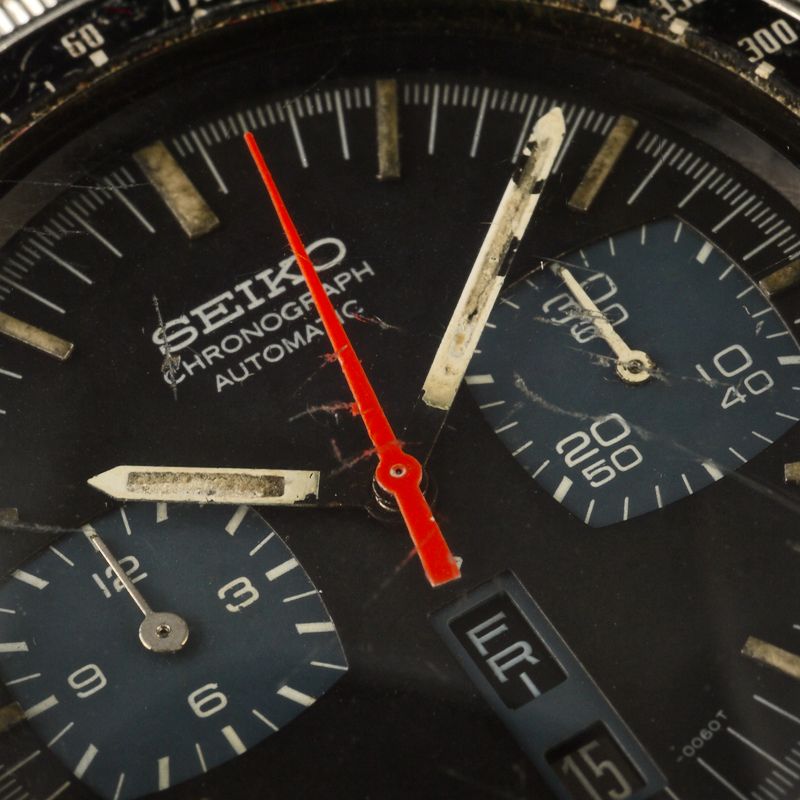
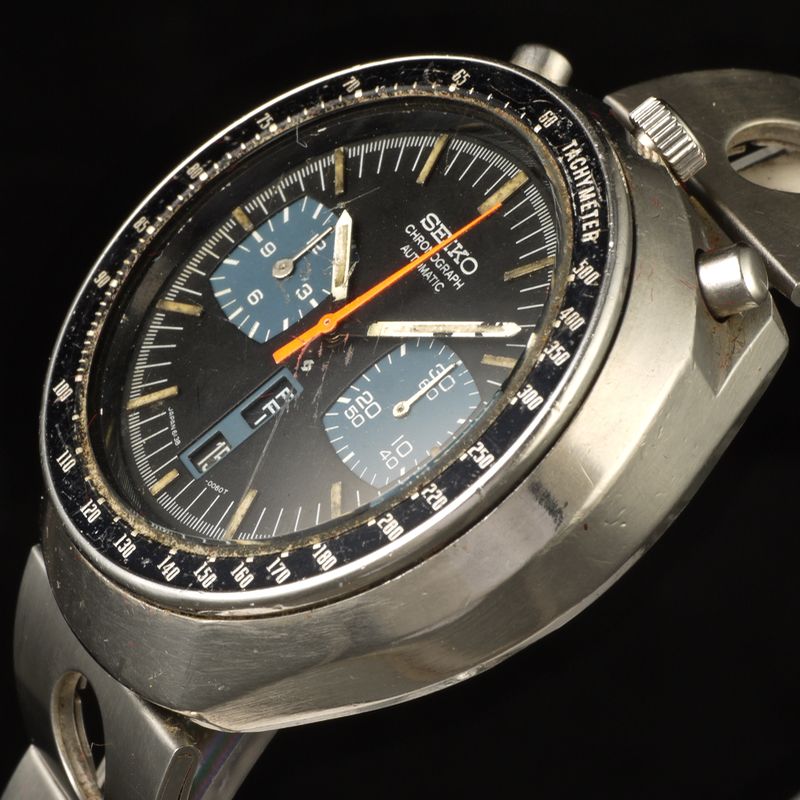
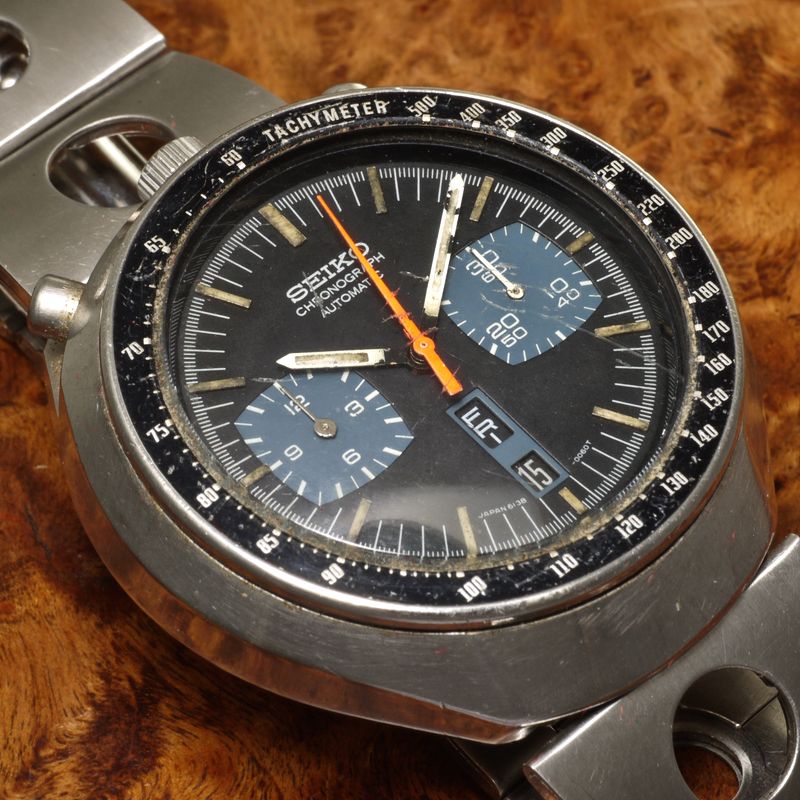
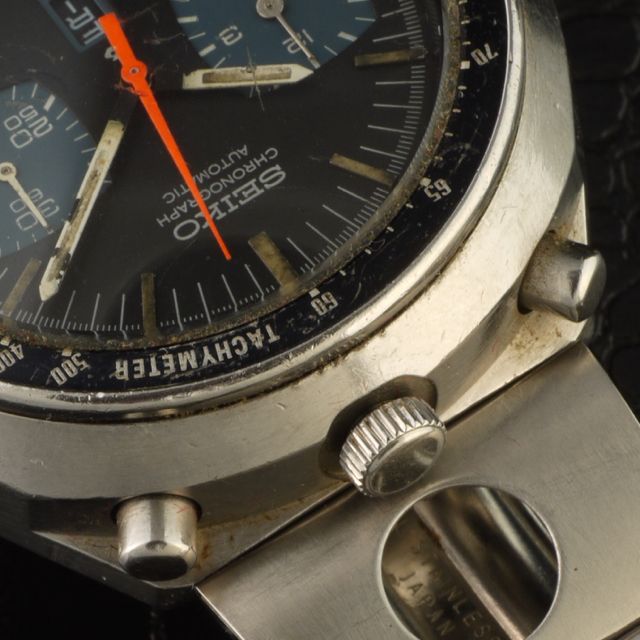
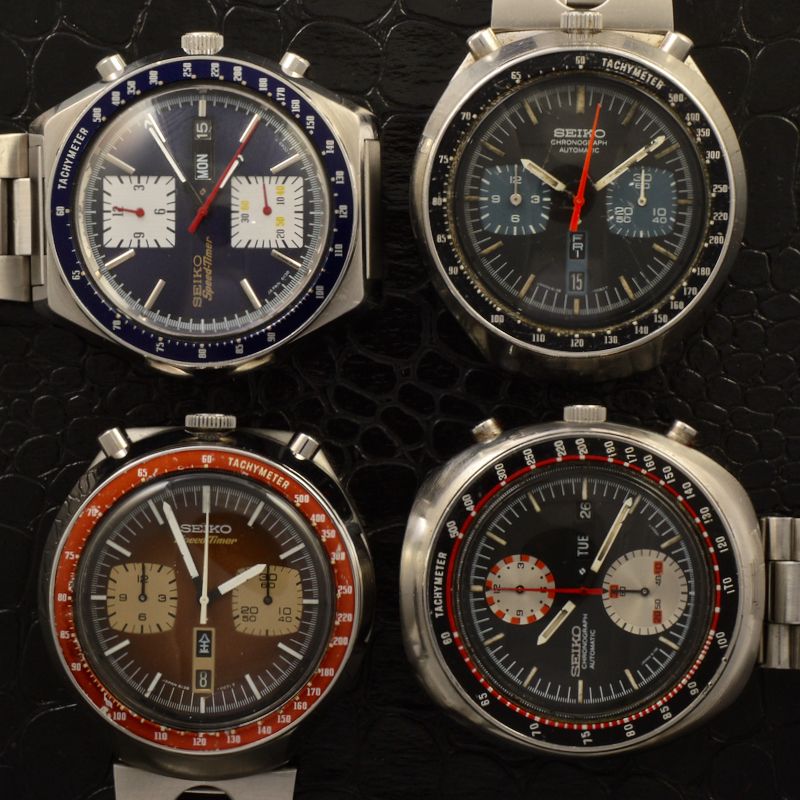
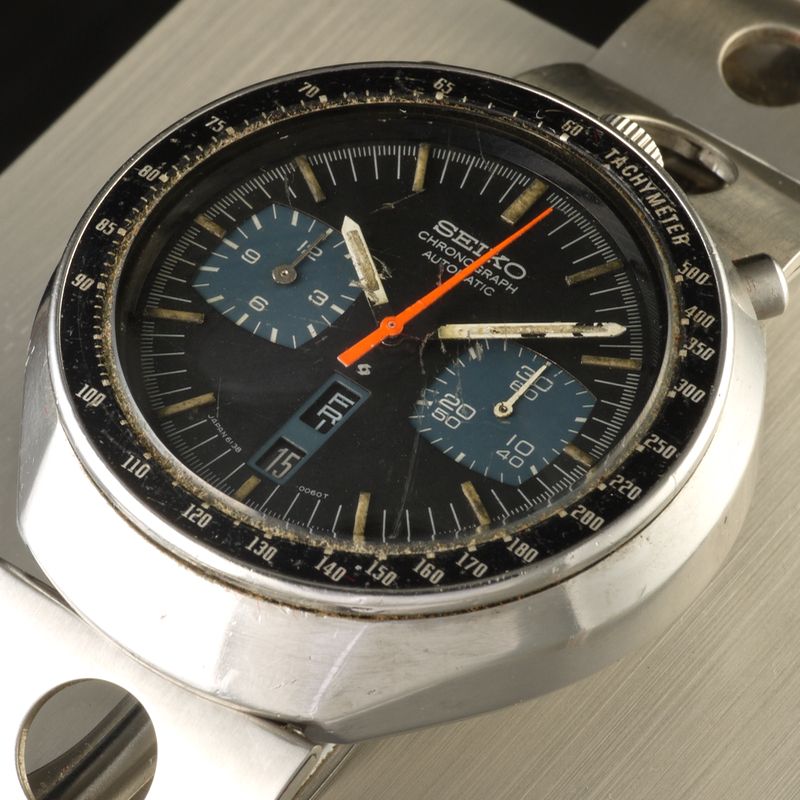
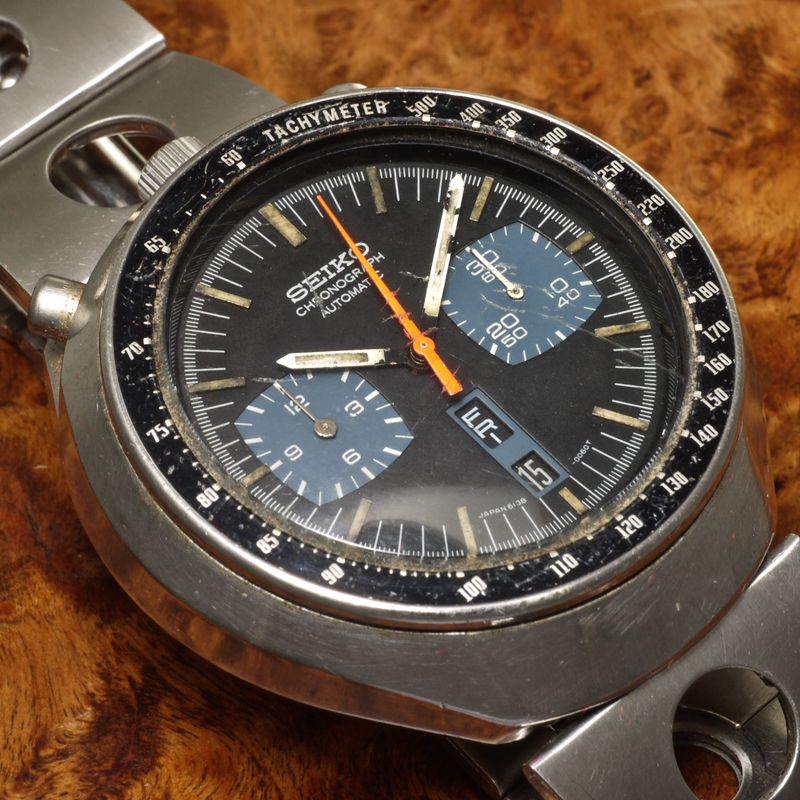
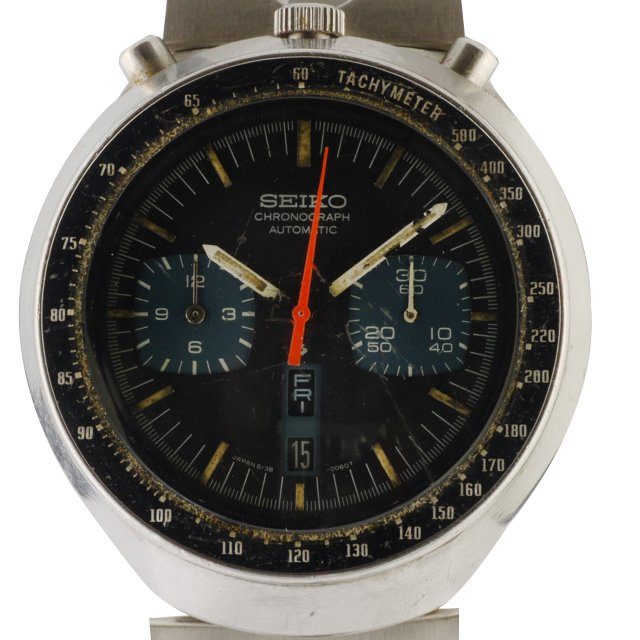
Seiko Bull Head
Star Wars hits theaters--for the first time--and will go on to be the second highest-grossing film of all time1977 Seiko Bullhead Chronograph black dial, cal. 6138 ref. 6138-0049 or 6138-0040.
The Bullhead is one of the most unusual, and one of the coolest looking Seiko chronographs
This watch comes in two color combinations, a reddish brown version with gold sub-registers and a black version with steely blue sub-registers, the original standard bracelet is a folded steel fish-bone style.
The 6138 is the 6139 successor, released one year later and like the 6139 were produced until 1979. The most obvious difference between the two is that the 6138 is a two register chronograph, with an added 12 hour register.
Seiko mechanical watches are highly prized by collectors.
The company was founded in 1881 in Tokyo, Japan. Eleven years later, in 1892, Seiko began to produce clocks under the name Seikosha.
Seiko is a Japanese word meaning “exquisite” or success.
The first watches produced under the Seiko brand appeared in 1924. In 1969, Seiko introduced the Astron, the world’s first production quartz watch; when it was introduced, it cost the same as a medium-sized car. Seiko later went on to introduce the first quartz chronograph. In 1985, Orient and Seiko established a joint factory.
Seiko is perhaps best known for its wristwatches, all of which were at one time produced entirely in-house. This includes not only major items such as micro gears, motors, hands, crystal oscillators, batteries, sensors, LCD’s but also minor items such as the oils used in lubricating the watches and the luminous compounds used on the hands and the dials.
Seiko produces both quartz and mechanical watches of varying prices. The least expensive are around US$45 sold under the brand Alba, the most expensive, Credor Juri GBBX998, costs US$554.000.
The word bullhead is the term used for chronograph watches that have their crown and chronograph pushers on top of the case (in some cases the crown is at the bottom of the case) rather than on the side – hence resembling the look of the head of a bull with its horns. These cases are usually larger and thicker than the average chronographs. Most of the time their cases are not even-shaped, meaning that the top of it where the pushers and the crown is located is wider and thicker and the bottom of the case is thinner. This way the dial is tilted towards 6 o’clock. This allows the wearer to check the time on the watch much more easily hence the oddity of the case. They are particularly special for no reason other than in most cases they were produced in relatively small numbers.
